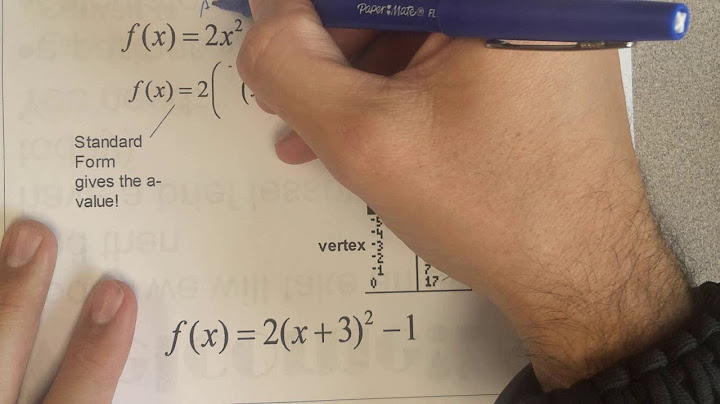Graphing inequalities is the process of showing what part of the number line contains values that will "satisfy" the given inequality. Show Examine the first inequality x > -5. A graph of this inequality will show what numbers may be used to replace x in our inequality to make a true statement. Notice that the circle above -5 is not shaded in because a possible solution does NOT include -5. An arrow is drawn to the right of -5 to show that all values greater than -5 may be used for x. The second inequality reads that x must be greater than OR equal to 8. Therefore we must start at 8 and include 8 as a possible solution by darkening in the circle above. The arrow must be drawn to the right to show that all values on the number line greater than 8 are possible solutions. The third inequality states that x must be less than -6. The circle drawn above -6 must NOT be shaded in because -6 is NOT a possible solution for x. An arrow moving to the left of -6 should be shown. This is where values are less than -6. The fourth inequality states that x must be less than OR equal to 12. The circle above 12 will be shaded in to include 12 as a possible solution. The arrow will be pointing to the left of 12 because this is where values on the number line are less than 12. 
Graphing Inequalities on a Number LineInequalities are exactly what they sound like: equations where the sides are "inequal" (not equal) to each other. There are five basic inequalities that we need to be familiar with:
The inequality y < 2 means that y can be any number less than 2 (such as 1.9, 0.75, 0, -6, etc.). The inequality y > 7 means that y can be any number greater than 7 (such as 7.1, 8, 9, 537, etc.). The inequality y ≤ 2 means that y can be any number less than 2, or it can be equal to 2 itself (2, 1.9, 1, 0, -6, etc.). Last but not least, the inequality y ≥ 7 means that y can be any number greater than 7, or it can be equal to 7 (7, 7.001, 8, 9, 200, etc.). That little line underneath an inequality symbol means "or equal to." How do we remember which one is which? "Less than" and "greater than" are easy to mix up, so we like to think of them as an incomplete Pac-Man (or, if you prefer, Ms. Pac-Man). Pac-Man, being the hungry circle he is, always wants to eat the bigger number, so his "mouth" will always be open towards the larger number.   How to Graph InequalitiesWe can graph inequalities on a number line to get a better idea of how they're behaving. Just follow these steps.
Here's what y ≤ 2 looks like:  Here's what y < 2 looks like:  Notice the subtle difference between the two graphs. In the first graph, the circle around the 2 is colored in. This is because y can be 2 in the first, but not the second. Graphing Inequalities ExamplesExample 1 j > -3.5 In this example, the circle around the -3.5 is not colored in and all numbers to the right of the circle are shaded. This is because -3.5 is less than j, or we could say that j is greater than -3.5. Example 2 p ≠ ¾  Here the variable can be any number besides ¾, so we need to shade in everything that's not ¾. Example 3 -10 ≥ x  The circle is colored in because x can be -10 and x can be smaller than -10, so we shade all numbers to the left. Look Out: if you switch the terms on each side of the inequality, be very careful to change the sign, too. For example, x > 6 is the same as 6 < x. Compound InequalitiesCompound inequalities are two or more inequalities combined in the same statement. They often include the words "and" or "or." With "and" inequalities, we only graph the numbers that satisfy both inequalities, a.k.a. the intersection of both inequalities. With "or" inequalities, we graph the numbers that satisfy either inequality, or both at the same time. In other words, we graph the combination, or union, of both inequalities. Let's start by looking at an "or" example in depth. y > -1 or y ≤ -3 If we break this apart, we can think of it as two separate inequalities: y > -1  y ≤ -3  For an "or" inequality we combine all possible values of y onto one number line:  Now let's look at an "and" inequality: -0.5 < z and z ≤ 0.25 For starters, we can combine forces and write the inequality like this: -0.5 < z ≤ 0.25 Now tackle each side separately. -0.5 < z  z ≤ 0.25  To finish up, we only graph the numbers that satisfy both conditions; i.e. the numbers greater than -0.5 and less than or equal to 0.25.  How do you graph an inequality on a number line?To plot an inequality, such as x>3, on a number line, first draw a circle over the number (e.g., 3). Then if the sign includes equal to (≥ or ≤), fill in the circle. If the sign does not include equal to (> or <), leave the circle unfilled in.
|

Related Posts
Advertising
LATEST NEWS
Advertising
Populer
Advertising
About

Copyright © 2024 paraquee Inc.


















